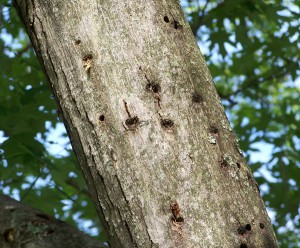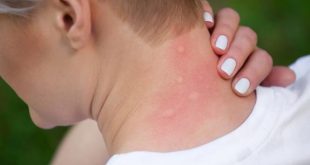 If you have trees on your property, then understanding the invasive insects that destroy this plant is imperative. There are several species of tree bugs that live in different geographic zones. There are also types of insects that target particular species of trees. Recognizing that your property’s trees are under attack right away can save the plants from complete destruction. Because trees increase the value of your land in addition to providing benefits such as erosion resistance, windbreaks and shade, it is important to get rid of destructive insects as quickly as possible. There are numerous species of insects that damage trees such as beetles, aphids and borers.
If you have trees on your property, then understanding the invasive insects that destroy this plant is imperative. There are several species of tree bugs that live in different geographic zones. There are also types of insects that target particular species of trees. Recognizing that your property’s trees are under attack right away can save the plants from complete destruction. Because trees increase the value of your land in addition to providing benefits such as erosion resistance, windbreaks and shade, it is important to get rid of destructive insects as quickly as possible. There are numerous species of insects that damage trees such as beetles, aphids and borers.
Emerald Ash Borer
The emerald ash borer is a rapidly spreading pest in the Midwest United States after its introduction from Russia and Asia. This insect’s larvae focuses on invading ash trees to get nutrition from the bark and underlying wood, leading to the death of the plant. An application of insecticide at the base of ash trees in the soil typically prevents emerald ash borer invasion for approximately two years. The insecticide is absorbed by the tree’s roots to travel up through the trunk and branches. Ash trees already infected by the emerald ash borer require multiple treatments to destroy adult insects and larvae as the eggs hatch.
Aphids
Each type of insect that attacks specific tree species causes particular kinds of problems or symptoms that residential or commercial property owners may notice. Aphid species tend to attack the leaves of trees, leading to strange shapes and stunted growth. Swarms of aphids produce a large amount of sticky body waste called honeydew that attracts sooty mold fungus that makes trees have an unattractive appearance. There are over 4,000 species of aphids, but it is easier to eradicate than most tree insects. Spraying chemical insecticides or natural plant extracts on trees is an efficient way to get rid of this pest.
Asian Long-Horned Beetle
The Asian long-horned beetle began to invade trees during the 1990s in New York before traveling to nearby states. The insect’s larvae hatch after being laid in the bark of trees. The larvae traveling through a tree’s trunk feast on the wood, disrupting the flow of sap. The combination of tunnels and lack of flowing sap leads to a weakened trunk that often crumbles, destroying the tree. Currently, there is no insecticide treatment for this insect, leading to drastic action to prevent it traveling to new areas. Areas with infestations are quarantined, or trees are completely destroyed, including the roots.
Common Pine Shoot Beetle
This invasive tree bug was discovered in the 1990s in pine trees grown for the Christmas holidays in the United States. Because decorative pine trees were shipped throughout the country, this insect invaded new geographic zones quickly. The insect has spread through several states and Canada, leading to federal agencies controlling the transportation of untreated pine products such as logs and boards that could carry insects, larvae or eggs. When an infestation of the common pine shoot beetle is found, the area is commonly quarantined or burned to prevent the insect from traveling to new locations. Failure to follow the local regulations concerning reporting the common pine shoot beetle can lead to fines.
American Tree Masters LLC is a full-service tree removal and trimming company in Phoenix, Arizona.
